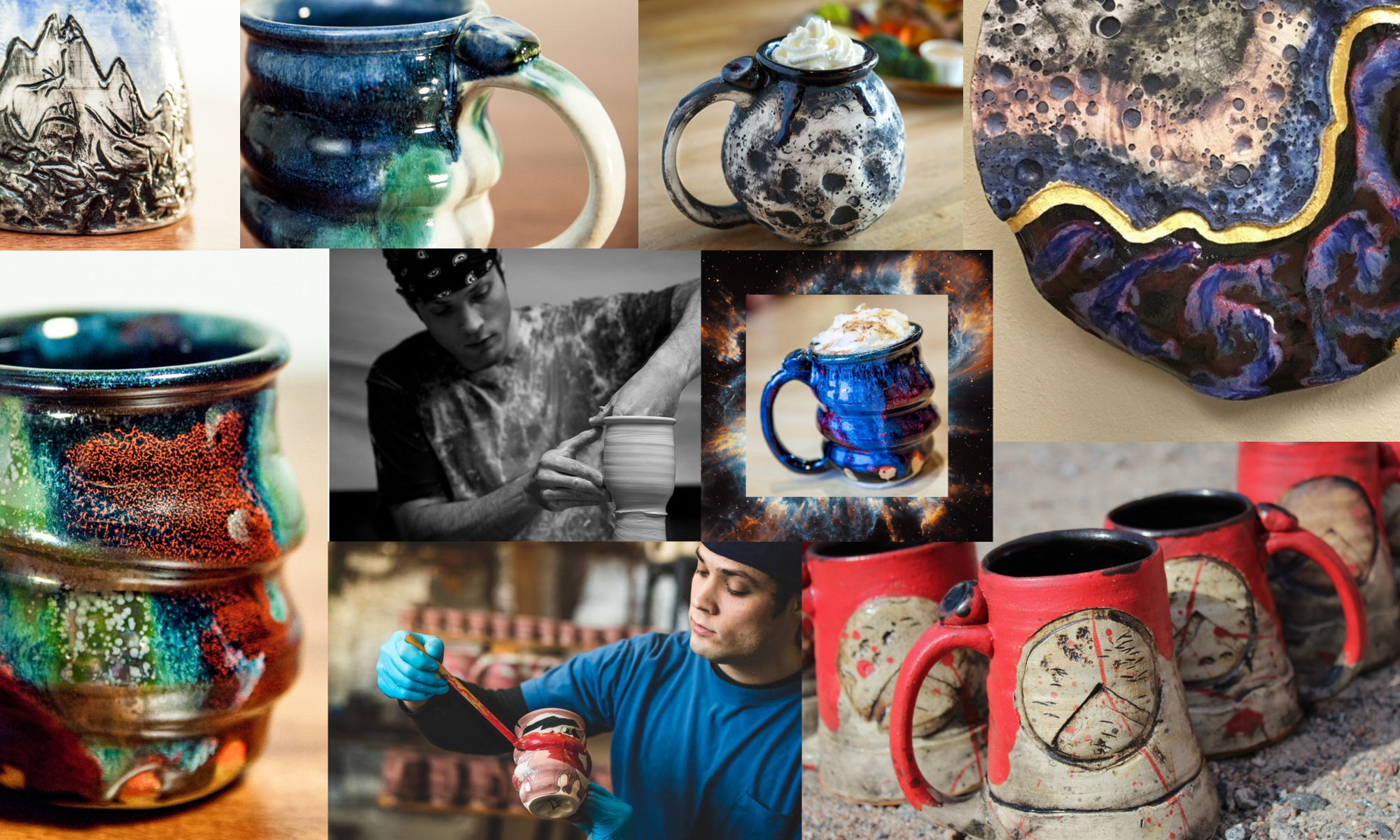“I believe clay is magic. Devoting my life to living as a potter has taught me that art can reveal truths about our relationship to nature. Art helps us connect to the cosmos, and to each other. Ceramic art, specifically the art of the pottery mug, offers unique opportunities to experience powerful emotions over a simple cup of coffee.”
– Joel Cherrico, Potter







